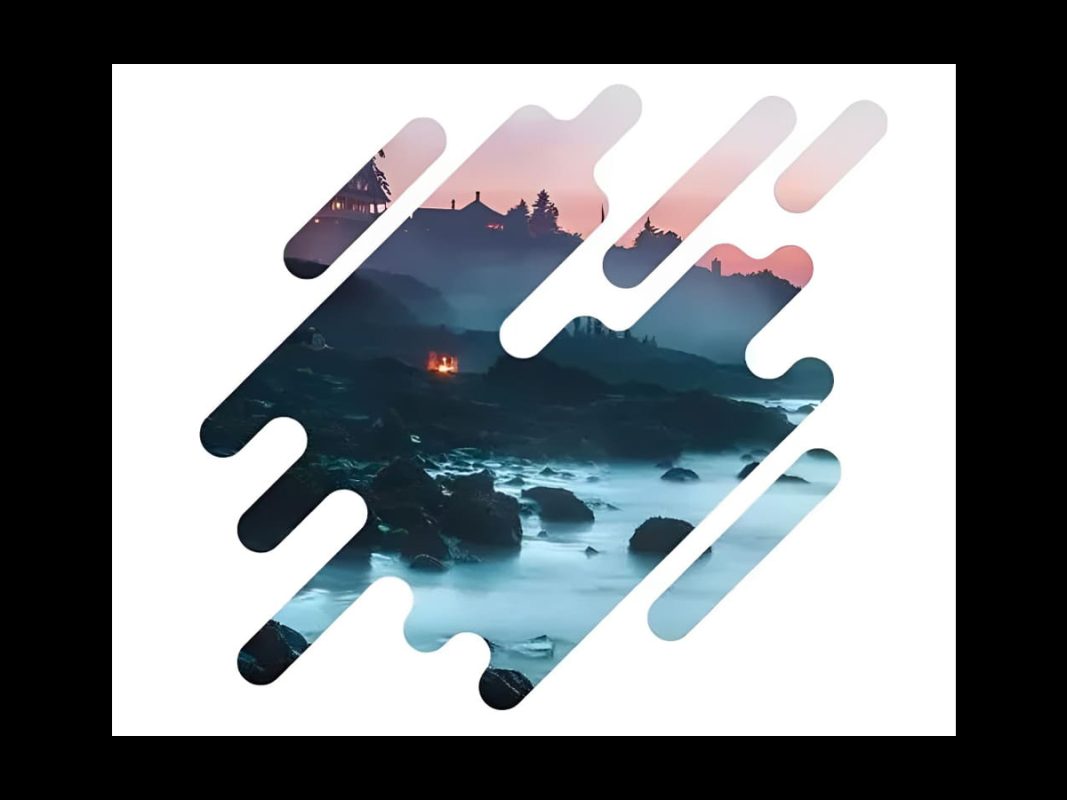Clipping Masks: What Are They?
Photoshop’s clipping masks are anreal tool for limiting a layer’s discernibility. Using clipping masks is similar to using layer masks in this regard. It’s likely to get the same effect by using clipping masks and layer masks in the same way. Use black and white to show and coverdifferent areas of the layer using a layer mask A clipping mask, on the other hand, uses the content and slide of one layer to control another’s prominence.
Two layers are obligatory to make a clipping mask. Supervisory the visibility of a layer above it is done by a layer at the bottom. Or in another way, the mask is on the bottom layer and the clipped layer is on top of it.

This is the case when the bottom layer comprises real content. However, if a helping of the bottom layer is translucent, the consistent portion of the layer above it will be hidden as a result. Clipping masks may seem more complex than layer masks, but they are just as simple to use. For the sake of clearness, let’s enterprise our own clipping mask.
A clipping mask is a feature commonly used in graphic design and photo editing software, such as Adobe Photoshop. It allows you to control the visibility of one layer based on the content of another layer. In the context of photo editing, a clipping mask is often used to limit the visibility of one layer to the shape of another layer below it.
In this tutorial, you can know how to use clipping masks in Photoshop to show and hide various areas of a layer and fit photos into shapes! We’ll study the basics of how to make a clipping mask, and we’ll examine the notion behind them in better depth so that by the inference of this course, you’ll have a firm consideration of how clipping masks function. I’ll be using Photoshop CC, but all is well-matched with Photoshop CS6 and before.
A clipping mask is a feature commonly used in graphic design and photo editing software, such as Adobe Photoshop. It allows you to control the visibility of one layer based on the content of another layer. In the context of photo editing, a clipping mask is often used to limit the visibility of one layer to the shape of another layer below it.
Here’s a simple explanation of how a clipping mask works:
- This is the layer that defines the visible area or shape.
- Top This layer is the one you want to apply the clipping mask to. It will be visible only where it overlaps with the base layer.
- When you create a clipping mask, the top layer takes on the shape and transparency of the base layer. Anything on the top layer that extends beyond the boundaries of the base layer is not visible. This is particularly useful in photo editing for several reasons:
- Clipping masks allow you to apply adjustments or effects precisely to a specific area without affecting the entire image. For example, you could adjust the brightness, contrast, or color of only a certain part of the image.
- When you use a clipping mask, the original image or layer remains unchanged. You are essentially placing an adjustable layer above it, affecting only the visible areas based on the base layer’s shape.
- Clipping masks help in organizing your layers and editing workflow. By stacking layers with clipping masks, you can easily manage complex edits without affecting other parts of the image.
- In graphic design and artistic compositions, clipping masks can be used to create intricate designs, combine images seamlessly, or achieve unique visual effects.
Basics of clipping mask to coloring photo
Creating a color photo using a clipping mask involves overlaying a color on an image or part of an image while maintaining the transparency of the underlying pixels. Here’s a step-by-step guide using a common graphic design software like Adobe Photoshop:
- Open the image you want to work with in your graphic design software.
- Create a new layer on top of your image layer. This will be the layer where you’ll apply the color.
- Select the color you want to use. You can do this by setting the foreground color in the color picker.
- Fill the new layer with your chosen color. You can do this by using the paint bucket tool or the “Edit” > “Fill” option.
- Make sure the colored layer is positioned above the image layer in the layer stack. You can drag and drop layers in most graphic design software.
- In Photoshop, you can create a clipping mask by right-clicking on the colored layer and choosing “Create Clipping Mask” or by pressing Ctrl + Alt + G (Windows) or Cmd + Opt + G (Mac).
- In other software, look for a similar option or use the shortcut specific to that program.
- Experiment with different blend modes for the colored layer to achieve the desired effect. Common blend modes include Overlay, Soft Light, and Color.
- You can also adjust the opacity of the colored layer to control the intensity of the color.
- Use layer masks or other tools to refine the color application. You can paint on the mask with black to hide parts of the color or white to reveal more.
- Once you are satisfied with the result, save your image.
Keep in mind that the exact steps may vary slightly depending on the graphic design software you’re using, but the basic concept of creating a clipping mask to overlay a color on an image remains the same.
Well, if you want to learn Making color photo by Photoshop, here is a glimpse-
Clipping mask is so very helpful and some cases it is the best option. If you are not dealing with anything, that has texture like any kind of water color background because clipping mask in order to paint over it like that you would lose all of those kins of details. But when it’s a solid color this is a great way to quickly and easily brush a new color over the lettering or whatever it is you are doing
- So, say we have text which is already separated in a new layer, so now you can play with a new color, but because the text is black, the color options like hue and saturation one color balance wont work for them. So, I have to use a clipping mask

- So, to use a clipping mask, I am going to come down and click new layer and then right click on it. Then click create clipping mask.

- Now from here. All you have to do is change to your brush tool. And once you have a brush tool, you just go up there to change your color


- Let’s pick a nice bright color like blue that’s pretty blue

- And then you just brush it across the letters is so easy as pie and there we go all done.


- If you want to change the color you are like not going with this, one super easy come up to the color snatch maybe I want to pick a color from that already artwork.


- Then brush it on nicely, so that how you create and use a clipping mask.

How the process is works
A clipping mask is an essential tool in photo editing that allows you to control the visibility of one layer based on the content of another layer. It’s particularly useful when you want to apply adjustments, effects, or overlays to a specific part of an image without affecting the entire image. Here are some reasons why clipping masks are important in photo editing:
Clipping masks enable precise editing by confining adjustments or effects to a specific area of an image. This is particularly useful when you only want to target a specific object, person, or portion of the photo.
When you use a clipping mask, the original image remains intact, and the edits are applied to a separate layer. This non-destructive editing allows you to go back and modify or remove the adjustments at any time without affecting the underlying image.

Clipping masks help maintain a clean and organized layer structure in your editing workflow. By stacking adjustment layers or additional elements above the base image and applying clipping masks, you can easily manage and reorder your edits.
With clipping masks, you can selectively apply filters, adjustments, or effects to specific areas of an image. For example, you may want to enhance the color of the sky without affecting other elements in the photograph.
Using clipping masks can speed up your workflow by allowing you to focus on specific parts of an image without dealing with the entire composition. This makes it easier to experiment with different effects and settings.
Clipping masks enable the combination of multiple layers in a way that only affects the visible pixels of the underlying layer. This is useful when compositing different elements or images together while maintaining control over individual adjustments.
In summary, clipping masks are important in photo editing because they provide a flexible and precise way to apply edits, effects, and adjustments to specific areas of an image, contributing to a more controlled and organized editing process.

